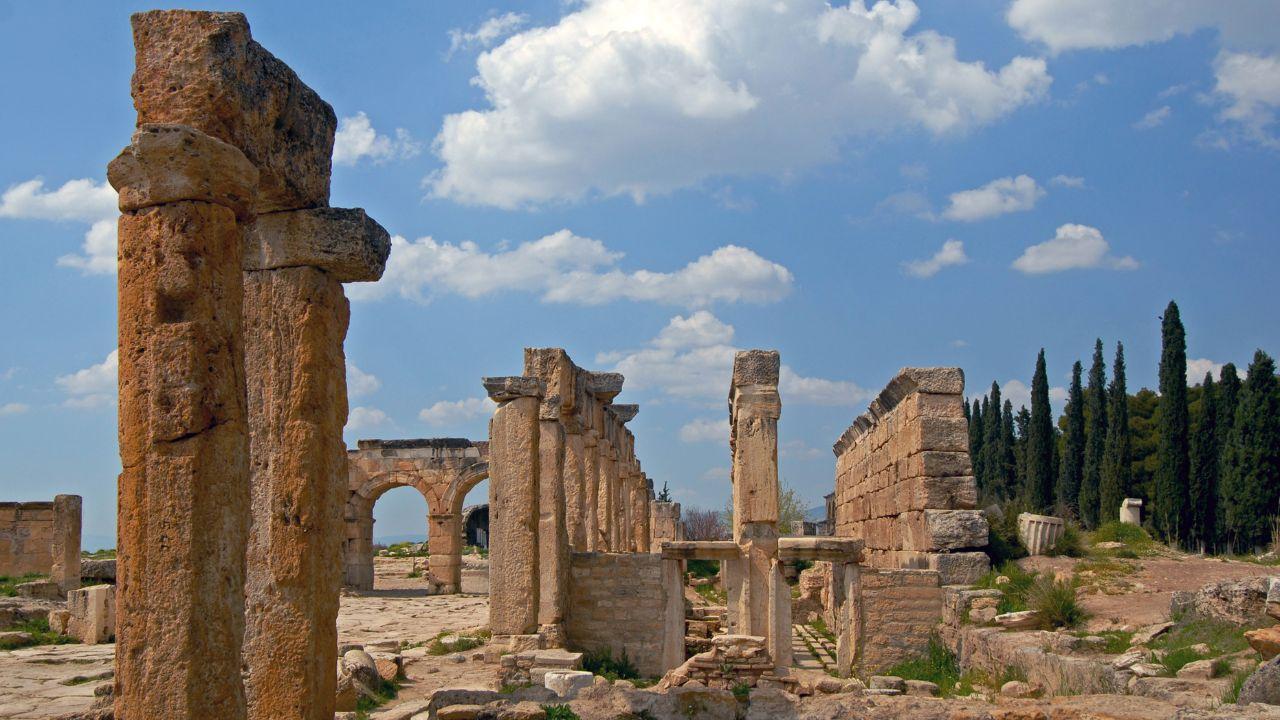
Post by : Vansh
The Middle East has long been recognized as the cradle of human civilization. From the earliest written languages to magnificent cities built thousands of years ago, this region holds some of the world’s richest historical treasures. When we speak of rediscovering the ancient civilizations of the Middle East, we are not merely exploring the ruins of the past but uncovering the very foundations of modern society. These civilizations gave humanity monumental achievements in governance, art, architecture, science, and spirituality.
The lands of Mesopotamia, often referred to as the "land between rivers," were home to the earliest complex societies. Civilizations such as the Sumerians, Akkadians, Babylonians, and Assyrians flourished here, giving rise to organized cities, agriculture, and trade. The ancient civilizations of the Middle East introduced groundbreaking innovations like the wheel, cuneiform writing, and codified laws. The famous Code of Hammurabi, for example, stands as one of the first legal frameworks in human history.
Egypt, located along the fertile Nile River, further enhanced the region’s significance. Its pyramids, temples, and hieroglyphic scripts remain symbols of engineering genius and cultural depth. The combination of Mesopotamian ingenuity and Egyptian grandeur created a rich tapestry of heritage that continues to inspire the world.
The Middle East was not an isolated region but a hub of cultural interaction. Positioned at the crossroads of Asia, Africa, and Europe, it served as a vital trade corridor. Caravans carried goods like spices, textiles, and precious metals, while ideas and philosophies traveled alongside. This cultural exchange contributed to the development of science, literature, and philosophy.
The Persian Empire, another monumental force in the region, extended its influence across continents, leaving behind architectural marvels such as Persepolis. Their contributions to governance, administration, and infrastructure still resonate today. The blending of Persian, Mesopotamian, and Egyptian traditions shaped the region’s dynamic identity.
When examining the ancient civilizations of the Middle East, one cannot ignore their intellectual contributions. Astronomy, mathematics, and medicine flourished in Babylon, while Egyptian scholars advanced knowledge in anatomy and engineering. Observatories were established to study celestial patterns, laying the groundwork for modern astronomy. The development of calendars, irrigation systems, and monumental architecture highlight the region’s scientific and practical genius.
Later, during the Islamic Golden Age, Middle Eastern scholars preserved and expanded upon the knowledge of earlier civilizations. Libraries in Baghdad and Cairo became centers of learning, where Greek, Persian, and Indian texts were translated, studied, and enriched. This intellectual spirit shaped global progress and bridged ancient wisdom with the modern world.
Beyond material advancements, the Middle East remains central to the spiritual evolution of humanity. The region is home to the world’s major monotheistic religions—Judaism, Christianity, and Islam. Each faith has deep historical and cultural roots in these lands, influencing billions of people across centuries. Sacred cities such as Jerusalem, Mecca, and Medina remain focal points of faith and pilgrimage, reinforcing the region’s timeless spiritual significance.
The early civilizations also worshiped a pantheon of gods and goddesses, reflecting humanity’s evolving relationship with nature and the divine. Temples, ziggurats, and sacred rituals reveal the profound role of religion in shaping ancient societies.
The rediscovery of the ancient civilizations of the Middle East owes much to archaeology. Excavations at sites such as Ur, Nineveh, and Luxor have unearthed inscriptions, artifacts, and monuments that offer glimpses into lost worlds. The discovery of the Rosetta Stone, for example, unlocked the secrets of Egyptian hieroglyphs, while the ruins of Babylon reveal stories of kings, empires, and cultural magnificence.
Modern technology has revolutionized archaeological exploration. Digital mapping, 3D reconstruction, and satellite imaging allow researchers to uncover buried treasures without damaging fragile remains. Museums worldwide now preserve and showcase these findings, ensuring that the legacies of these civilizations continue to inspire.
The information presented in this article is intended for general knowledge and educational purposes only. While every effort has been made to ensure accuracy, historical interpretations and sources may vary. Readers are encouraged to conduct further research for deeper insights. MiddleEastBulletin news network does not assume responsibility for any reliance placed on the content provided.










Curry Powers Warriors to Nail-Biting 109-108 Victory Against Spurs
Stephen Curry's 49 points propel the Warriors to a dramatic 109-108 NBA Cup triumph over the Spurs,

India Advances to Semi-Finals After Thrashing USA in Women’s Blind T20 World Cup
India secured a dominant ten-wicket victory over the USA, advancing to the semi-finals in the Women’

South Africa's Early Advantage as India Struggles on Day Two
On Day Two, India reached 138-4 as South Africa took three early wickets, complicating matters with

Kenta Nishimoto Defeats Lakshya Sen in Japan Masters Semifinal
Lakshya Sen's journey in the Japan Masters ends after losing to Kenta Nishimoto 19-21, 21-14, 12-21

Kenta Nishimoto Defeats Lakshya Sen in Japan Masters Semifinals
Lakshya Sen's run at the Japan Masters concludes with a loss to Kenta Nishimoto in the semifinals, 1

Major IPL Trade: Jadeja Joins Royals as CSK Signs Samson
In a significant IPL trade, CSK has acquired Sanju Samson from Rajasthan Royals in exchange for Ravi